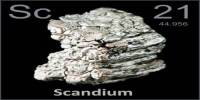New research has validated an abnormality previously observed in tests, adding to the evidence that something is amiss with the Standard Model of particle physics. It’s possible that the work will reveal exactly what’s wrong. The findings come from a hunt for the hypothetical sterile neutrino, a fourth electrically neutral and low-mass particle that is thought to exist in addition to the three neutrinos that we know about.
The experiment, which was published in the journals Physical Review Letters and Physical Review C, validates prior findings. Irradiated chromium-51 disks (which don’t form naturally) make up the setup, which is a key source of electron neutrinos. The disks are contained within two gallium tanks, and an electron neutrino bombardment converts part of the gallium atoms to germanium-71 atoms. The observed rate of this reaction, on the other hand, is between 20% and 24% lower than the theoretical modeling.
One explanation for the lack of electron neutrinos is the existence of a fourth neutrino called a sterile neutrino. Alternatively, the hypothesis may be incorrect. “The results are really interesting,” said Steve Elliott, a member of Los Alamos’ Physics division and principal analyst of one of the teams examining the data. “This reinforces the abnormality we’ve noticed before in other trials.” But it’s not clear what this entails. In the case of sterile neutrinos, there are presently contradicting findings. If the findings reveal that fundamental nuclear or atomic physics is misinterpreted, that would be fascinating as well.”
Neutrinos are classified into three flavors, a strange scientific word that has nothing to do with taste. Electron neutrinos, muon neutrinos, and tau neutrinos are the three types of neutrinos. One of the most intriguing properties of neutrinos is that they oscillate, or switch from one flavor to another as they travel across space.
They have the ability to move for an extended period of time. They interact relatively little since they have such a little mass and are electrically neutral. 100 trillion neutrinos flow through your body every second, as if you aren’t even there. The Soviet-American Gallium Experiment (SAGE), which began in the late 1980s, revealed an electron neutrino deficiency. This is confirmed by the Baksan Experiment on Sterile Transitions (BEST), the results of which we will describe below.
One explanation for the lower generation of germanium is that the electron neutrino is oscillating into a sterile neutrino. Alternatively, the cross-section of the electron neutrino — the likelihood of a certain particle interaction – could not be what the theory claims. The standard model of particle physics is one of the most brilliant sets of concepts ever devised by humans, allowing us to anticipate particles such as the Higgs Boson long before they were discovered. It is, however, restricted, and physicists are now pushing against those limitations in the hopes of discovering what lies beyond.
















